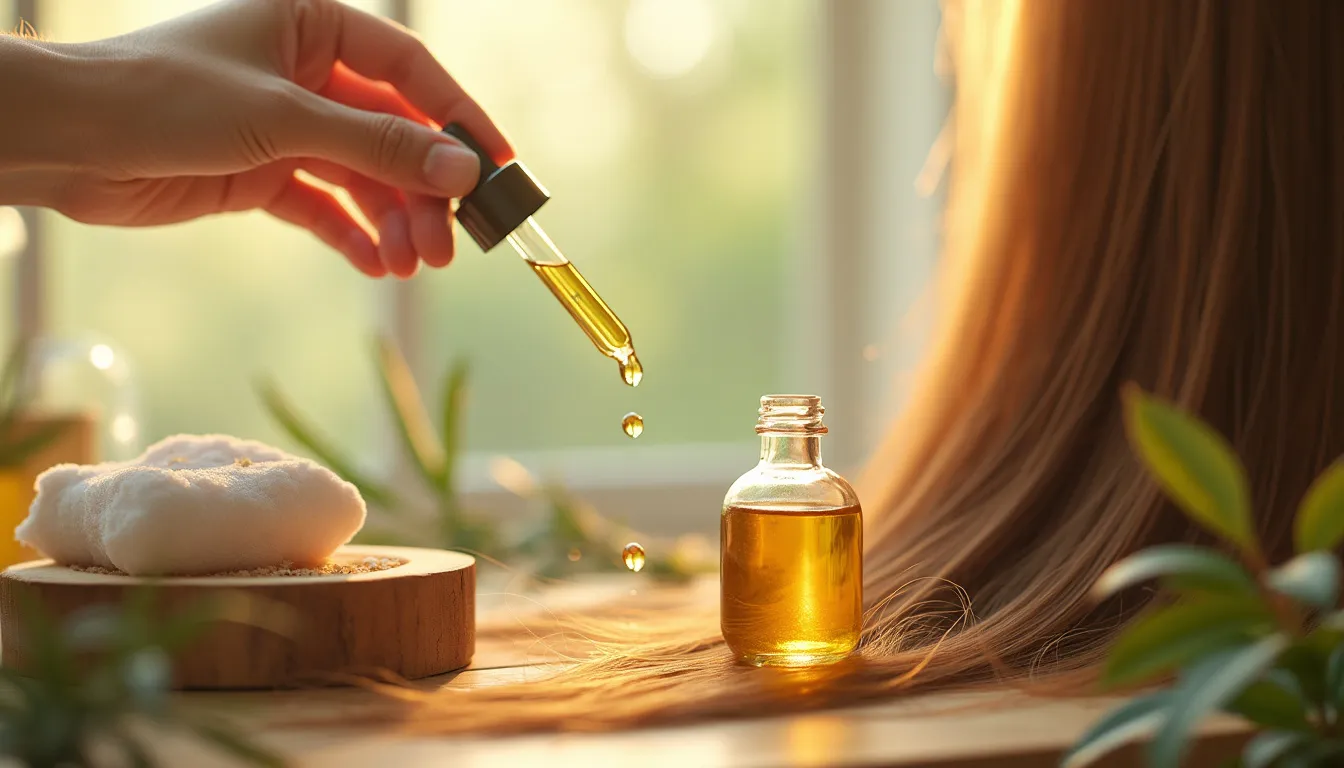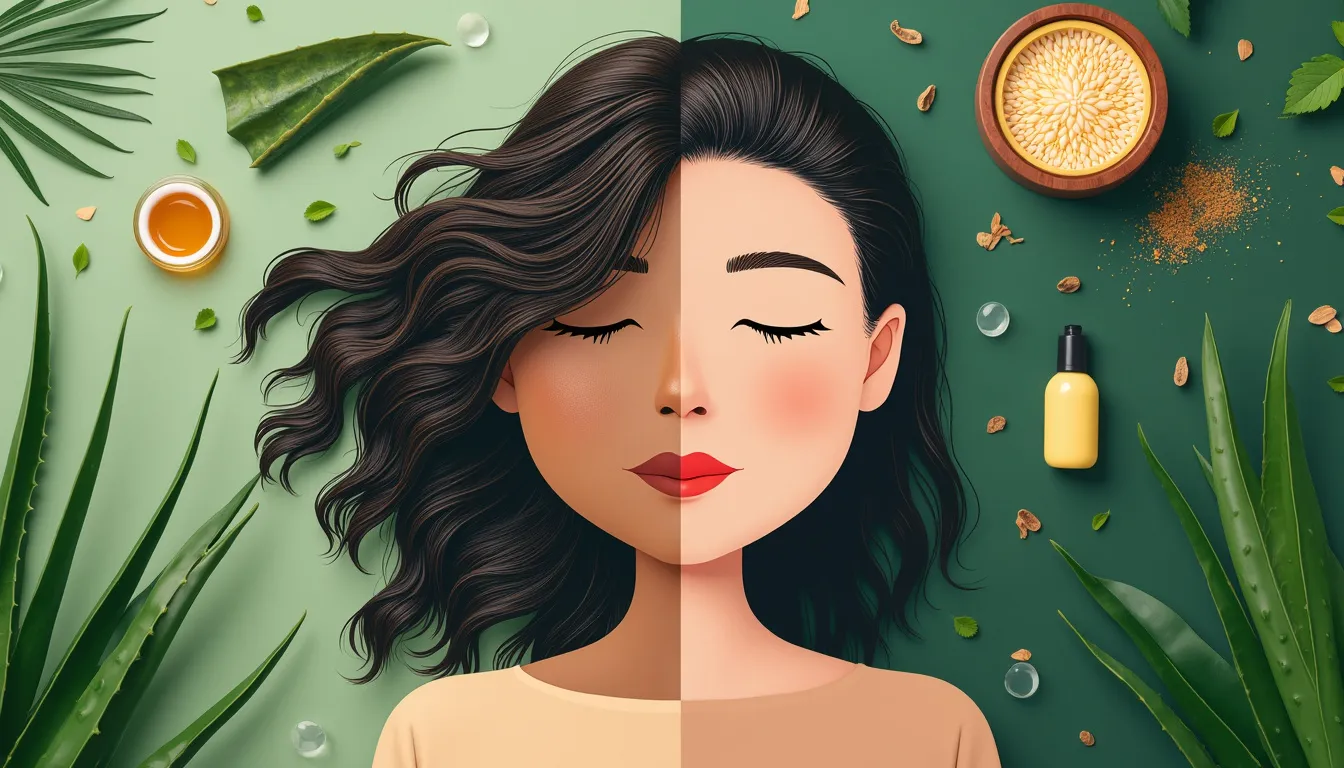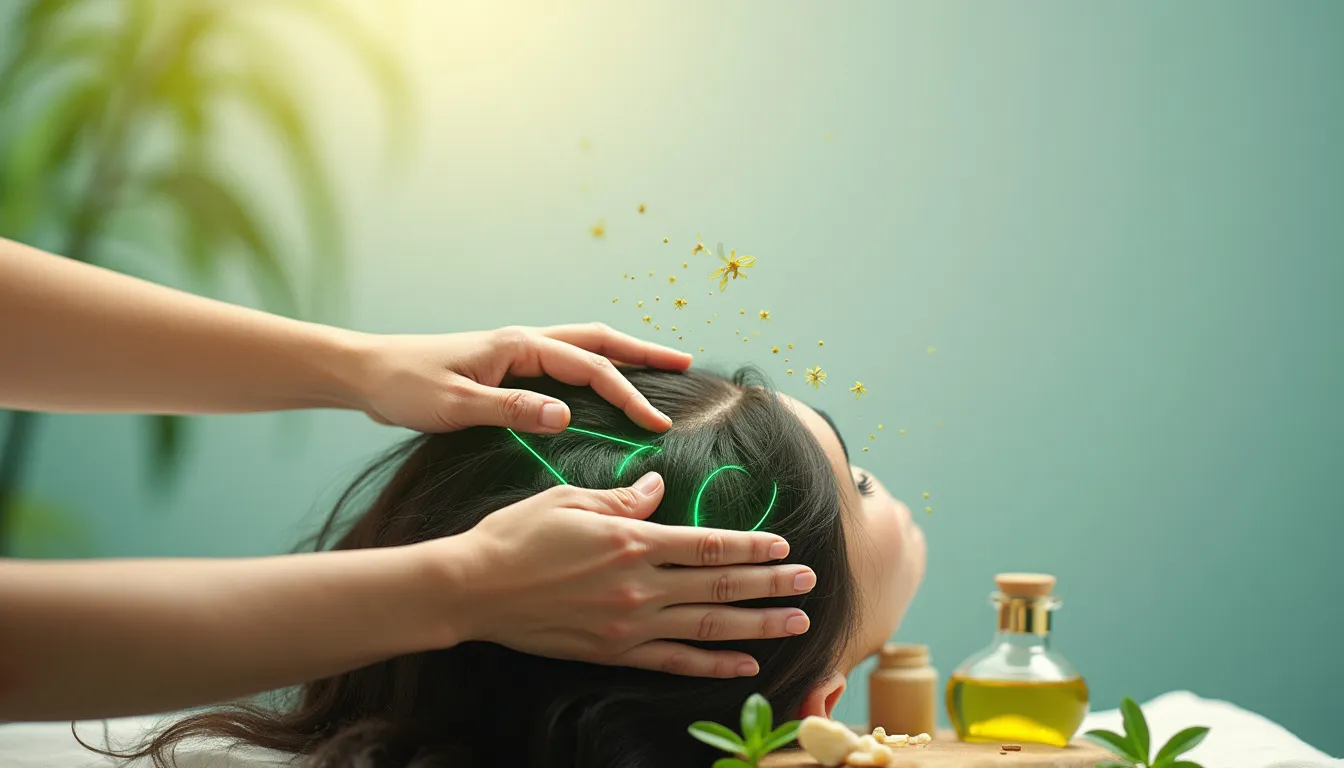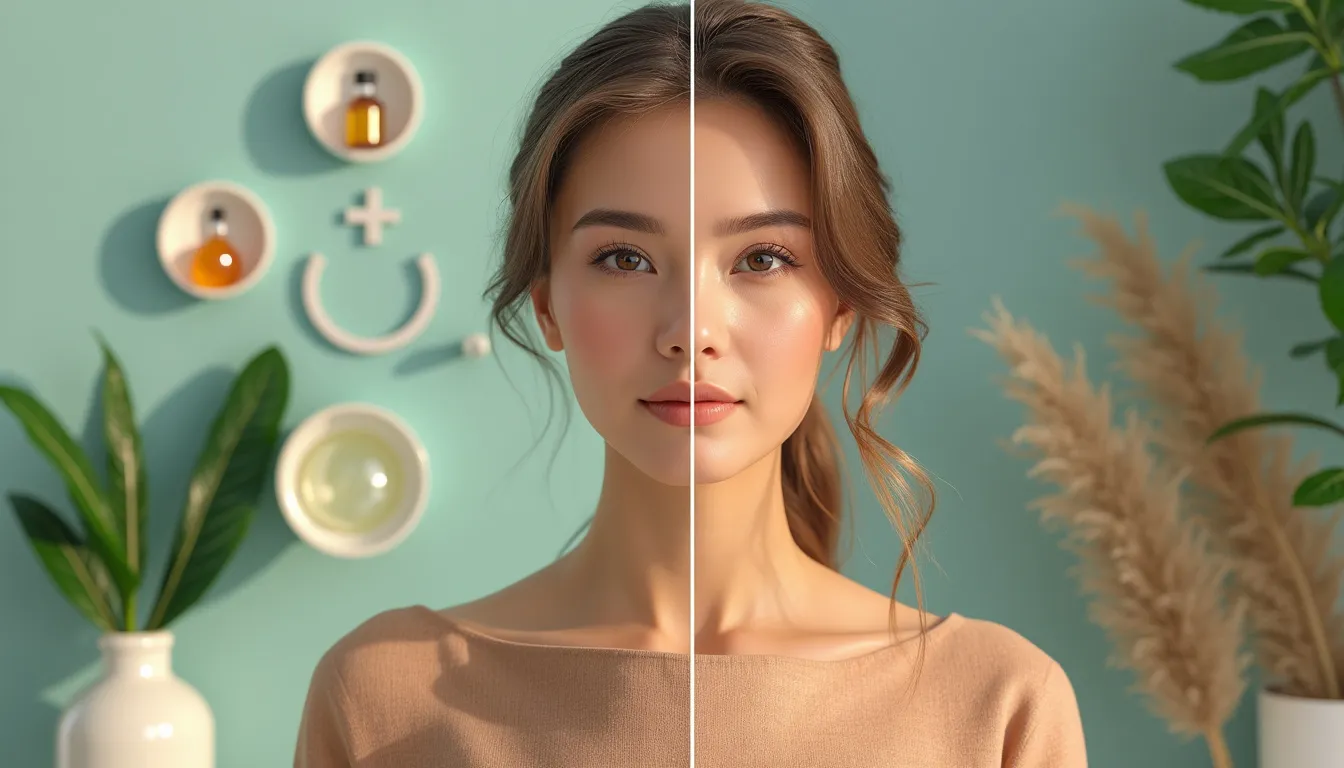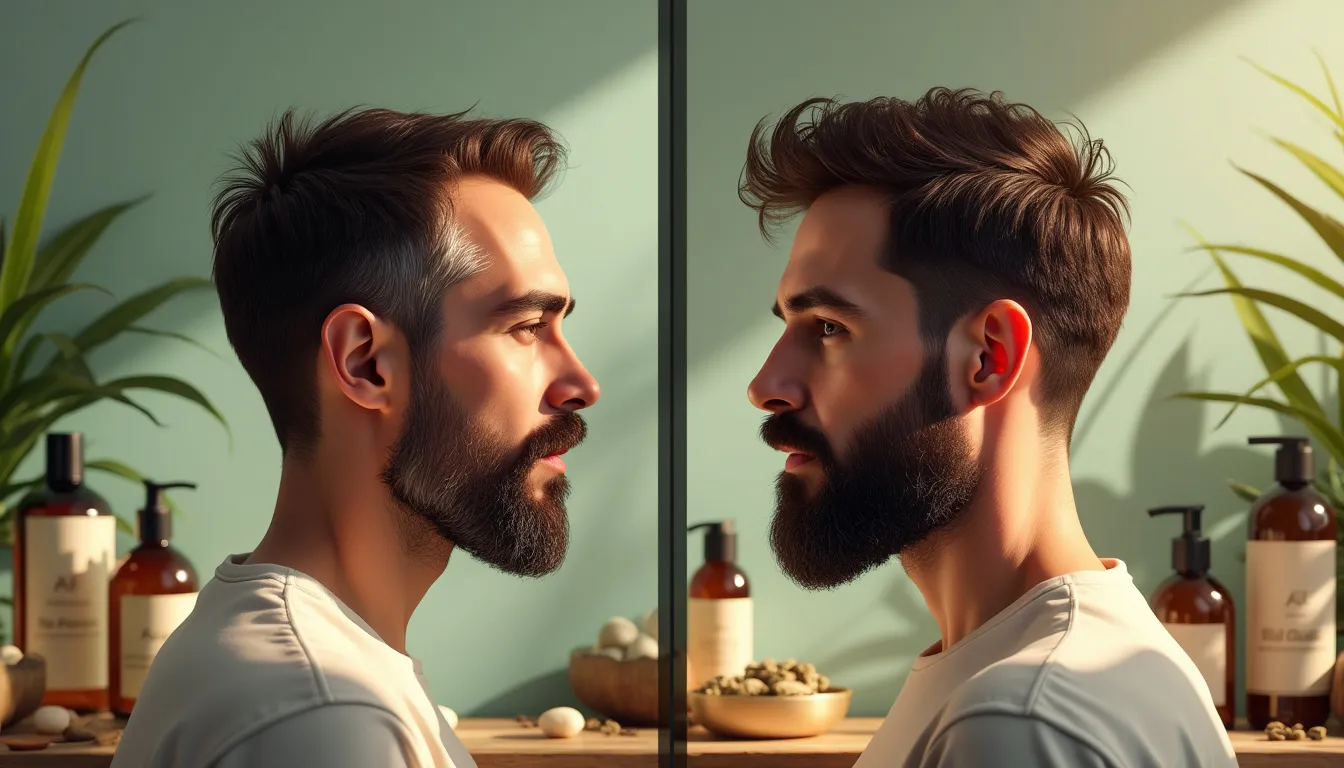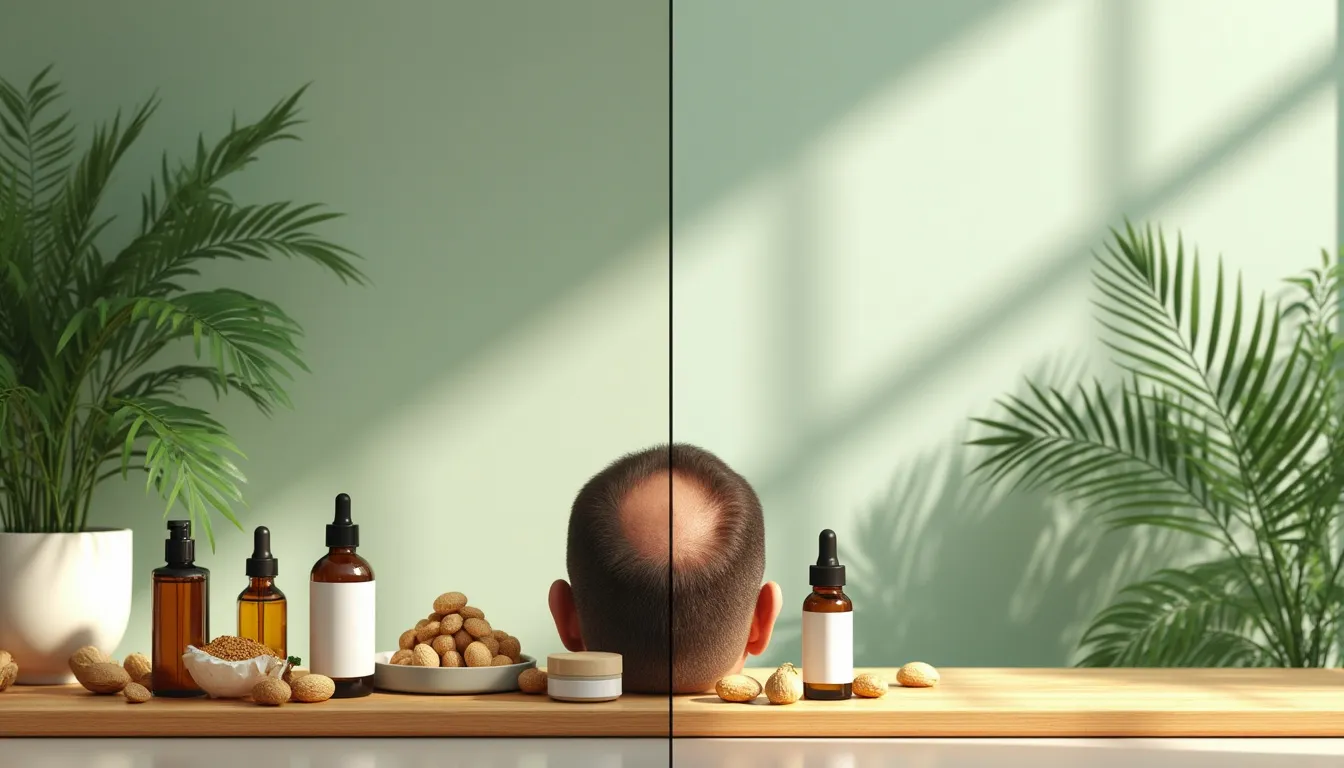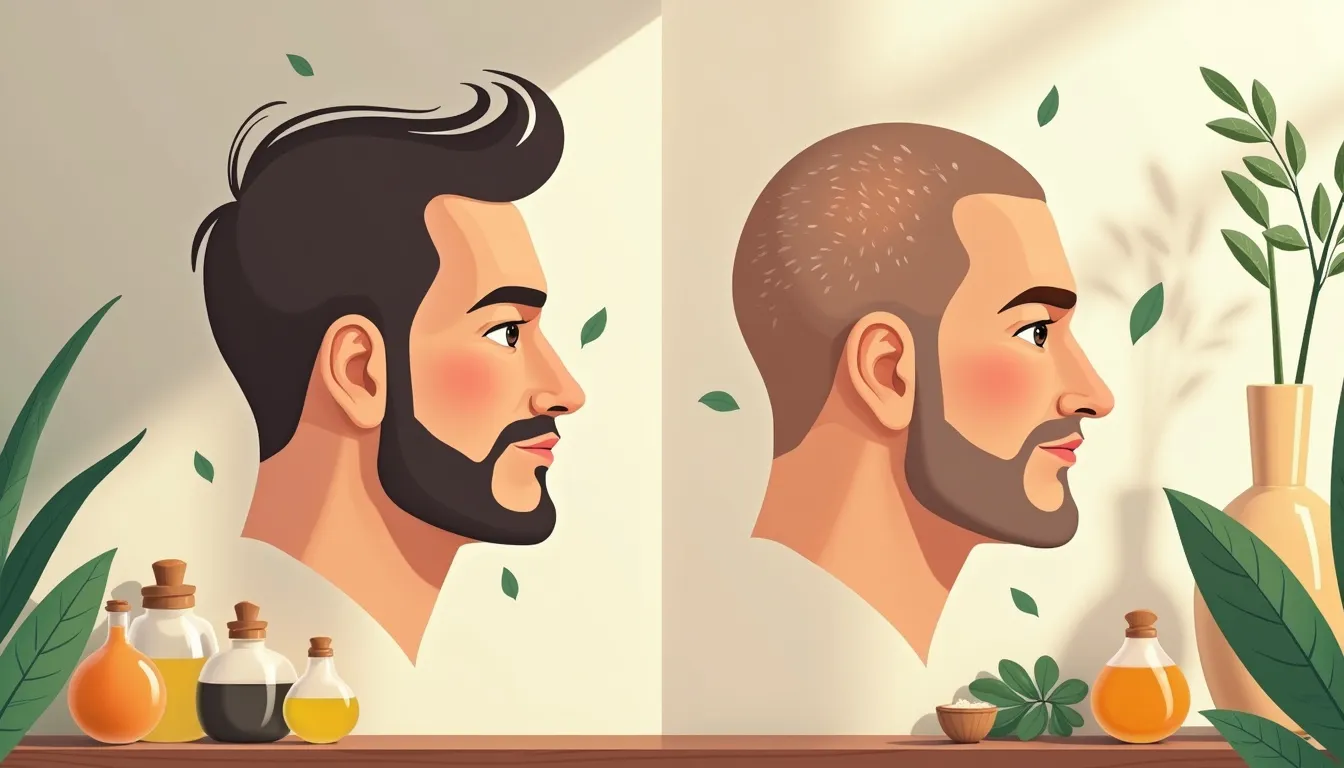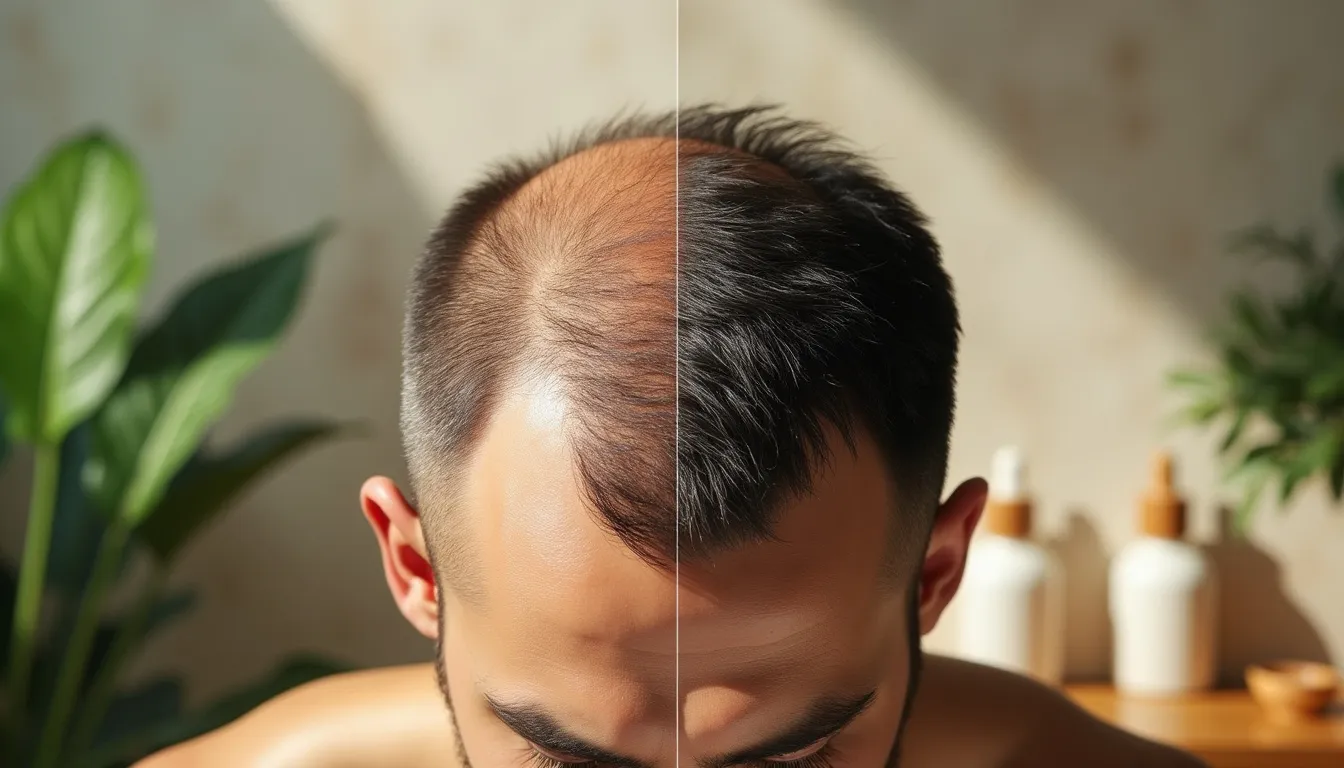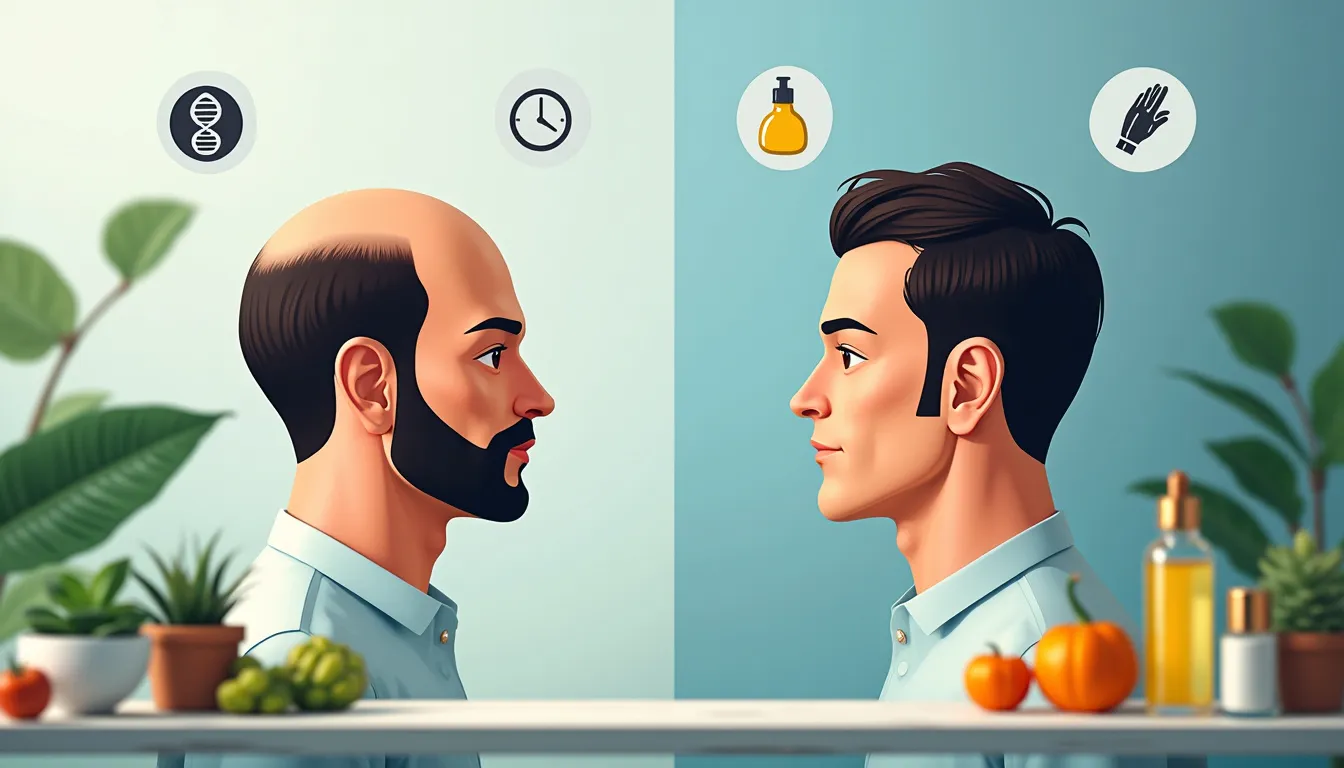Are you tired of looking in the mirror and seeing thinning hair or a receding hairline? You’re not alone. Millions of people struggle with hair loss and the quest for fuller, healthier locks. Enter hair growth oils – nature’s secret weapon in the battle against hair loss. These potent elixirs have been gaining popularity in recent years, and for good reason. But with so many options on the market, how do you find the best hair growth oil for your needs? In this comprehensive guide, we’ll dive into the world of hair growth oils, exploring their benefits, key ingredients, and the top contenders vying for the title of the best hair growth oil. Whether you’re dealing with stress-related hair loss, hormonal changes, or simply want to boost your hair’s natural thickness and shine, we’ve got you covered. Get ready to unlock the secrets of luscious, fuller locks and say goodbye to bad hair days for good!
Introduction to Hair Growth Oils
If you’re on a quest for luscious, fuller locks, you’ve probably come across the buzz surrounding hair growth oils. But what exactly are these magical elixirs, and can they really transform your tresses? Let’s dive into the world of hair growth oils and discover why they’re becoming a staple in many hair care routines.
What Are Hair Growth Oils?
Hair growth oils are natural or specially formulated oils designed to nourish your scalp, strengthen hair follicles, and promote healthy hair growth. These oils are typically packed with vitamins, minerals, and essential fatty acids that work together to create an optimal environment for hair to thrive.
The best hair growth oil isn’t just about adding shine to your strands; it’s about addressing the root cause of hair thinning and loss. These oils can penetrate the scalp and hair shaft, providing deep nourishment that commercial hair products often can’t match.
The Purpose of Hair Growth Oils
The primary purpose of hair growth oils is to stimulate and support the natural growth cycle of your hair. They aim to:
- Nourish the scalp and hair follicles
- Improve blood circulation to the scalp
- Strengthen hair strands to prevent breakage
- Balance scalp oil production
- Protect hair from environmental damage
By addressing these factors, hair growth oils can help create the ideal conditions for your hair to grow longer, stronger, and healthier.
Benefits of Using Hair Growth Oils
Incorporating the best hair growth oil into your hair care routine can offer a multitude of benefits:
- Increased Hair Thickness: Regular use can lead to thicker, fuller-looking hair.
- Reduced Hair Loss: Many oils have properties that can help reduce hair shedding and breakage.
- Improved Scalp Health: A healthy scalp is the foundation for healthy hair growth.
- Enhanced Hair Texture: Oils can make hair softer, smoother, and more manageable.
- Natural Moisture: Say goodbye to dry, brittle hair with the deep hydration provided by oils.
- Scalp Stimulation: Many oils have a warming effect that can stimulate blood flow to the scalp.
- Protection from Damage: Oils can create a barrier against heat styling and environmental stressors.
With these benefits, it’s no wonder that more and more people are turning to hair growth oils as a natural solution for their hair woes.
Key Ingredients to Look for in Hair Growth Oils
When searching for the best hair growth oil, keep an eye out for these powerful ingredients:
- Biotin: A B-vitamin essential for hair growth and overall hair health.
- Caffeine: Stimulates hair follicles and can prolong the hair growth phase.
- Saw Palmetto: May help block DHT, a hormone linked to hair loss.
- Vitamin E: A potent antioxidant that supports a healthy scalp.
- Omega-3 Fatty Acids: Nourish hair follicles and promote thickness.
- Essential Oils: Such as rosemary, peppermint, and lavender, known for their hair-boosting properties.
These ingredients work synergistically to create a powerhouse formula that can truly make a difference in your hair’s health and appearance.
How to Choose the Right Hair Growth Oil
With so many options on the market, selecting the best hair growth oil for your needs can be overwhelming. Here are some tips to help you make the right choice:
- Consider Your Hair Type: Some oils are better suited for certain hair textures and conditions.
- Check the Ingredient List: Look for oils with a high concentration of natural, beneficial ingredients.
- Read User Reviews: Real experiences from other users can provide valuable insights.
- Consult a Professional: A dermatologist or trichologist can recommend oils based on your specific hair concerns.
- Start with Small Amounts: Test a small area first to ensure you don’t have any adverse reactions.
Remember, the best hair growth oil for you might not be the same as what works for someone else. It’s important to be patient and consistent with your chosen oil, as results can take time to become noticeable.
Incorporating Hair Growth Oils into Your Routine
To get the most out of your hair growth oil, follow these tips for application:
- Apply the oil to your scalp and massage gently for 5-10 minutes to stimulate blood flow.
- Leave the oil on for at least 30 minutes, or overnight for deeper penetration.
- Use the oil 2-3 times a week for best results.
- Combine with a healthy diet and proper hair care practices for optimal growth.
By making hair growth oils a regular part of your hair care routine, you’re taking a proactive step towards achieving the fuller, healthier hair you’ve always dreamed of.
As we explore the world of hair growth oils, it’s clear that these natural remedies offer a promising solution for those looking to enhance their hair’s health and appearance. In the next section, we’ll dive deeper into specific oils that have gained popularity for their hair-boosting properties, helping you find the best hair growth oil for your unique needs.
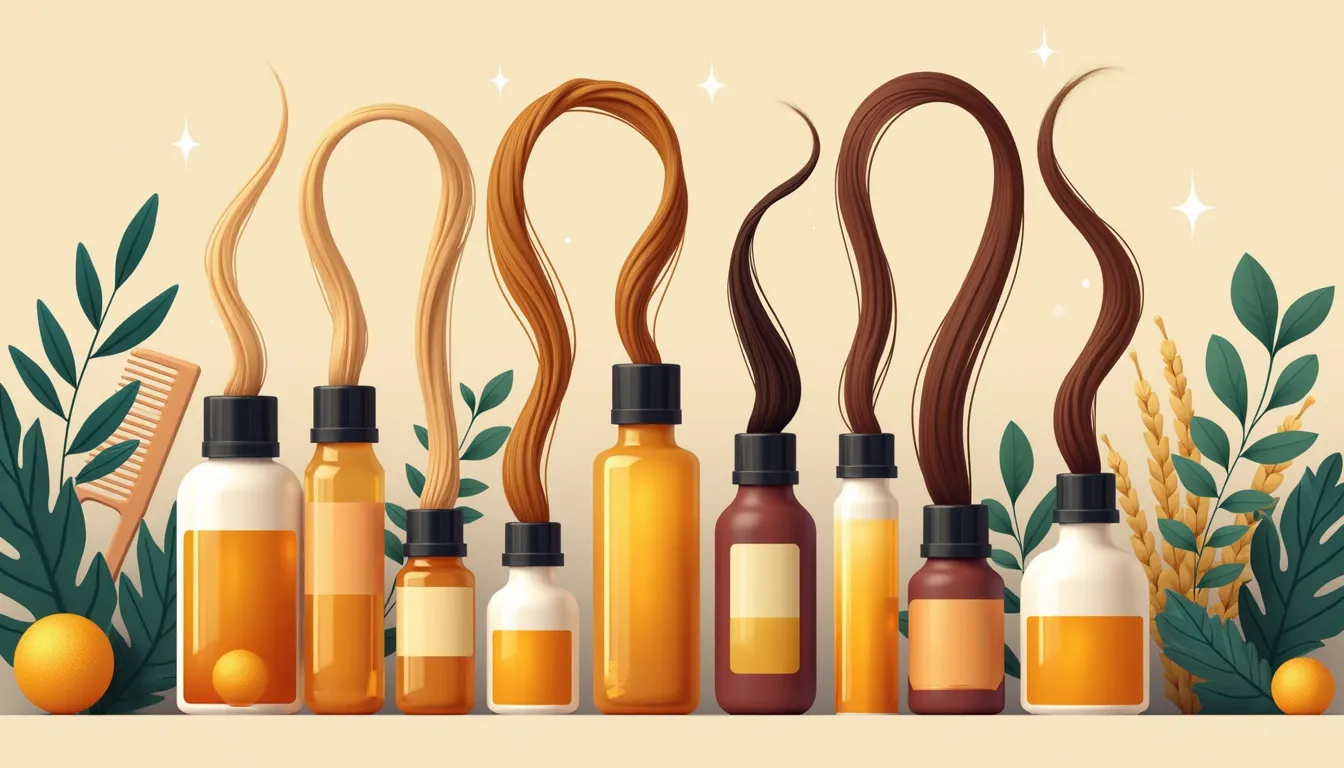
Top Hair Growth Oils for Fuller, Healthier Hair
When it comes to achieving luscious, fuller locks, choosing the right hair growth oil can make all the difference. Let’s dive into some of the best hair growth oils that have garnered praise from both experts and users alike.
A. Castor Oil: The Thick and Mighty
Castor oil has long been hailed as one of the best hair growth oils, and for good reason. This thick, viscous oil is packed with ricinoleic acid, a unique fatty acid known for its anti-inflammatory properties.
Benefits of castor oil for hair growth include:
- Improving blood circulation to the scalp
- Nourishing hair follicles
- Balancing scalp pH
- Providing antimicrobial protection
To use castor oil, warm a small amount between your palms and massage it into your scalp. Leave it on for at least an hour or overnight for maximum benefits. Many users report seeing noticeable improvements in hair thickness and growth after consistent use.
B. Rosemary Oil: Nature’s Hair Growth Elixir
Rosemary oil is not just for cooking; it’s also one of the best hair growth oils backed by scientific research. A study published in the journal Skinmed found that rosemary oil was as effective as minoxidil (a common hair growth medication) in promoting hair growth.
Key benefits of rosemary oil include:
- Stimulating hair follicles
- Improving cellular generation
- Reducing inflammation
- Enhancing circulation to the scalp
To incorporate rosemary oil into your hair care routine, mix a few drops with a carrier oil like jojoba or coconut oil. Massage this mixture into your scalp and leave it on for about 30 minutes before washing.
C. Peppermint Oil: A Cool Boost for Your Scalp
Peppermint oil is another contender for the title of best hair growth oil. Its invigorating scent is not the only thing that makes it stand out. Peppermint oil is known for its ability to stimulate blood flow to the scalp, which can promote hair growth.
Benefits of peppermint oil for hair growth:
- Increases circulation to hair follicles
- Provides a cooling, soothing sensation
- May help balance oil production
- Has antimicrobial properties
To use peppermint oil, mix 2-3 drops with your regular shampoo or conditioner. Alternatively, blend it with a carrier oil for a stimulating scalp massage. Be cautious, as peppermint oil can be potent – always dilute it properly before use.
D. Coconut Oil: The All-Rounder
While not typically marketed as a hair growth oil, coconut oil deserves a spot on this list due to its nourishing and protective qualities. Its ability to penetrate the hair shaft makes it an excellent choice for overall hair health, which is crucial for promoting growth.
Key benefits of coconut oil for hair:
- Moisturizes and conditions hair
- Protects against protein loss
- Reduces breakage and split ends
- Has antimicrobial properties
Coconut oil can be used as a pre-shampoo treatment, leave-in conditioner, or overnight mask. Its versatility makes it a popular choice among those seeking the best hair growth oil.
E. Comparing Effectiveness and User Reviews
When it comes to determining the best hair growth oil, user experiences can vary widely. Let’s break down how these oils compare based on effectiveness and user reviews:
- Castor Oil: Often praised for its thickening effects, many users report significant improvements in hair density. However, some find its thick consistency challenging to work with.
- Rosemary Oil: Backed by scientific studies, rosemary oil receives high marks for effectiveness. Users often report reduced hair fall and improved growth, though results may take time to become noticeable.
- Peppermint Oil: While less studied than some others, peppermint oil is popular for its invigorating effect. Users often report a tingling sensation and improved scalp health.
- Coconut Oil: While not specifically for growth, coconut oil is widely loved for its overall hair health benefits. Many users report softer, shinier hair with reduced breakage.
It’s important to note that the best hair growth oil for you may depend on your specific hair type, scalp condition, and personal preferences. Some users find success with a combination of oils, while others prefer to stick to one.
Remember, consistency is key when using hair growth oils. Results are not immediate and may take several weeks or even months of regular use to become noticeable. It’s also crucial to address any underlying health issues that might be contributing to hair loss or slow growth.
While these oils can be powerful allies in your quest for fuller, healthier hair, they’re not miracle cures. For persistent hair loss or scalp issues, it’s always best to consult with a dermatologist or trichologist.
Interested in exploring more advanced solutions for hair growth? Check out this comprehensive program designed to combat hair loss and promote healthier, fuller hair.
In conclusion, the quest for luscious, fuller locks often leads us to explore the world of hair growth oils. As we’ve discovered, these potent elixirs offer a natural and effective way to nourish our scalp and stimulate hair growth. From the versatile castor oil to the invigorating peppermint oil, each option brings its unique benefits to the table.
While there’s no one-size-fits-all solution when it comes to the best hair growth oil, understanding the properties of different oils can help you make an informed decision based on your specific needs. Castor oil’s ricinoleic acid content makes it a powerhouse for promoting hair thickness, while rosemary oil’s ability to improve cellular generation has been scientifically proven to rival minoxidil. Peppermint oil’s cooling sensation not only feels great but also boosts blood circulation to the scalp, and coconut oil’s moisturizing properties can help prevent breakage and split ends.
Remember, consistency is key when using hair growth oils. Regular application, coupled with a healthy diet and proper hair care routine, can lead to noticeable improvements in hair thickness, strength, and overall health. It’s also worth noting that while these oils can work wonders, they’re not miracle cures. Be patient and give your chosen oil time to work its magic.
As you embark on your journey to fuller, healthier hair, don’t be afraid to experiment with different oils or even create your own custom blend. What works for one person may not work for another, so listen to your hair and scalp. Pay attention to how they respond to different treatments and adjust accordingly.
Ultimately, the best hair growth oil is the one that aligns with your hair type, addresses your specific concerns, and fits seamlessly into your lifestyle. Whether you opt for the time-tested castor oil or the aromatherapeutic benefits of rosemary oil, you’re taking a positive step towards achieving the luscious locks you desire.
So go ahead, give these natural remedies a try, and watch as your hair transforms into the crowning glory you’ve always dreamed of. Remember, healthy hair starts at the root, and with the right hair growth oil, you’re nurturing your hair from the ground up. Here’s to your journey towards fuller, more vibrant hair!
